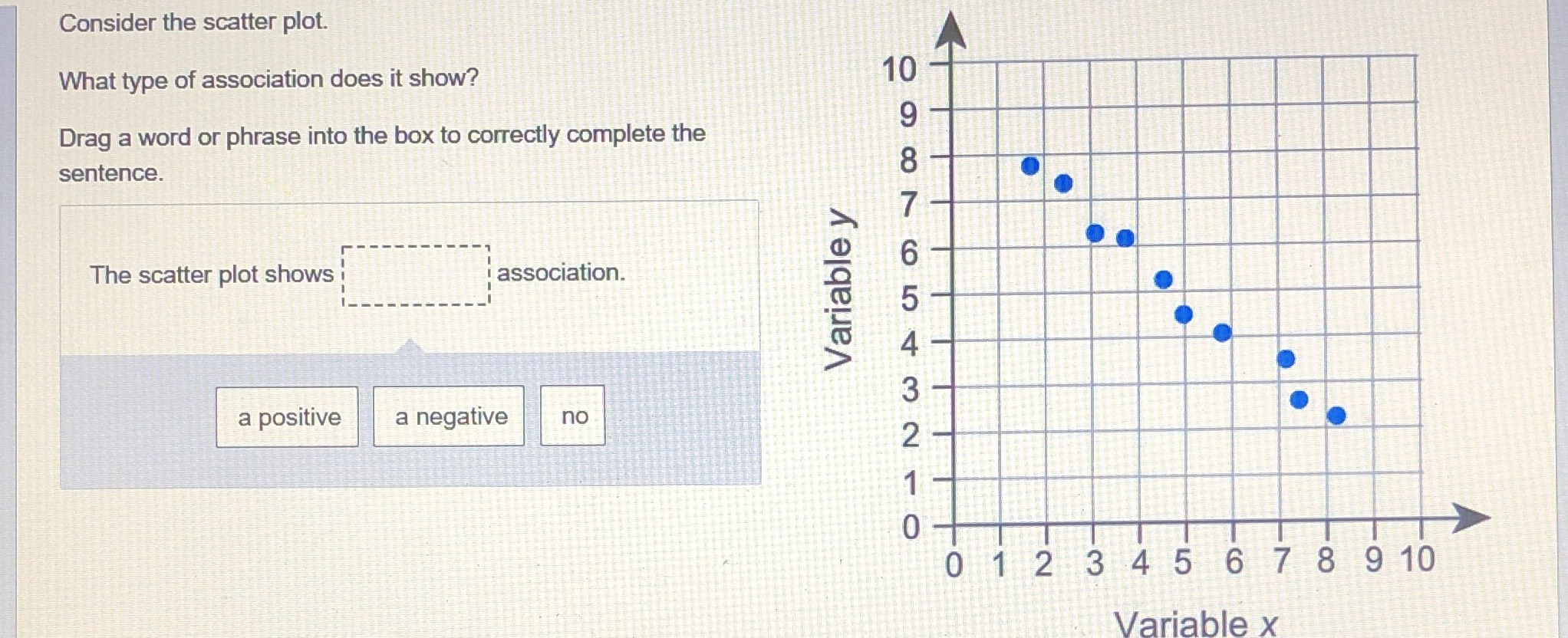Consider The Scatter Plot. What Type Of Associatio - CameraMath
About Linear Association
Learn how to use scatter plots to explore the relationship between two variables. See examples of positive, negative and nonlinear associations and how to make predictions using trend lines.
Learn how to identify linear or nonlinear relationships from scatter plots by examining the trend of the points. See examples, definitions, and practice problems with video instruction.
Learn how to create and interpret scatterplots to display and measure the relationship between two quantitative variables. See examples of positive, negative, and curvilinear associations, and how to calculate correlation coefficients.
A scatter plot is a diagram that displays the relationships between two numerical variables. Learn how to identify the types of association, draw the line of best fit, and solve problems based on scatter plots.
Learn how to use the correlation coefficient r to measure the linear association between two quantitative variables. See examples of positive, negative, and zero correlation, and how outliers, nonlinearity, and heteroscedasticity affect r.
Practice identifying the types of associations shown in scatter plots. Sometimes we see linear associations positive or negative, sometimes we see non-linear associations the data seems to follow a curve, and other times we don't see any association at all.
Scatter plots can show a linear association, a nonlinear association, or no association. For scatter plots that suggest a linear association, you can draw a trend line to show the association. You can assess the strength of the association by looking at the distances of plotted points from the trend line. Exercise 1. What is line of best? 2.
In general, you can categorize the pattern in a scatterplot as either linear or nonlinear. Scatterplots with a linear pattern have points that seem to generally fall along a line while nonlinear patterns seem to follow along some curve. Whatever the pattern is, we use this to describe the association between the variables.
A positive association is a relationship between two quantities where one tends to increase as the other increases. In a scatter plot, the data points tend to cluster around a line with positive slope. The relationship between height and weight for 25 dogs is shown in the scatter plot. There is a positive association between dog height and dog
The primary characteristic of a linear association is its consistency across the range of data. This means that the relationship holds true regardless of the specific values of the variables involved. A strong linear association will show a clear pattern when plotted on a scatter plot, where the points closely follow a straight line.



































